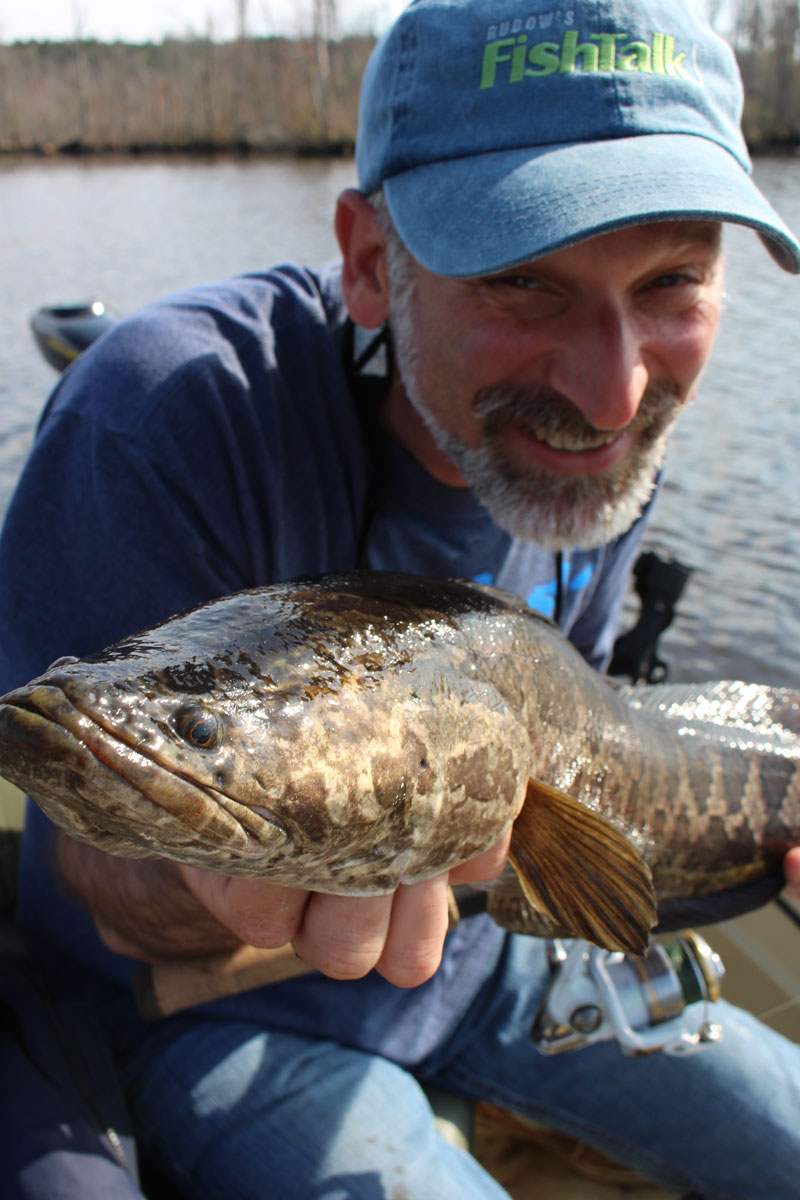Few events have had such a dramatic impact on our region’s fisheries as the recent explosion of northern snakeheads. This “new” species may have been around in our waters for well over a decade, but a combined population and popularity explosion has put the snakehead front and center and tempted countless anglers across the Mid-Atlantic Region away from their usual pursuits. It seems, however, that there’s a great love ‘em/hate ‘em schism running through the fishing community. Most people fall into one of two camps. According to some, snakeheads are an amazing sportfish that inhabit a previously under-utilized niche, and we should be glad for it – plus, they taste great. According to others, snakeheads are the bane of all existence and will decimate fish, frogs, and fowl until the entire ecosystem comes crashing down and the seas boil in flame, so you should kill, KILL, KILL each and every one – plus, they taste great.

Funny thing is, it’s starting to look like both views are more or less correct in their own ways. Now, I’ll be the first to admit that I’m no scientist. But after a relatively long stretch with these fish residing in the Western Shore tribs and a fair amount of monitoring the ecosystem on the Potomac River in specific, it looks like this Asian invader can coexist quite nicely with our other gamefish. There’s also no denying the snakehead’s value as both a gamefish and a food-fish. They smash topwater, fight as well as any fish you’ll ever do battle with, and they are in fact amazingly good to eat.
However, on the Eastern Shore in a number of waterways they appear to have taken over with a Blitzkrieg-style assault. (For more details, see Snakehead Fishing in the Blackwater). Most recently, the endless monsoons that radically reduced salinity levels in the Bay allowed their expansion to previously-snake-less waterways. When’s the last time, for example, that you heard of any sort of good bite in Back River? Um, yeah – that’s a snakehead hotspot, now.
Even more worrisome, their numbers may have begun a nuclear-style explosion at the headwaters of the Bay. You’ll see in this month’s Fish News that while only one was discovered at the Conowingo fish ladder the past two springs, this year a rather shocking 81 snakeheads turned up. Considering that all those little baby stripers we’re depending on for future fisheries may now have to run a snakehead gauntlet to survive, a bit of trepidation seems reasonable.
So are snakeheads a great gamefish, or are they a slow-motion disaster? It’s starting to look like the answer to both questions is yes. And while there are a number of reasons to care about their presence in our waters, one that’s being overlooked is the very schism these two viewpoints have created in our fishing community. Dare someone mention how much they like snakeheads on Facebook, the snake-haters will attack with the vengeance of a parent guarding its fry-ball. Post a picture of dead snakes piled in a cooler, and snake-lovers will pounce with the vigor of a 10-pounder slamming a topwater frog.
Meanwhile, claims of spot-burning abound. This has to be the silliest attack of them all. No matter what species you’re talking about, fishermen will find out about and flock to wherever lots of fish start getting caught. But people who get crowded out of spots they’ve been fishing seem to forget this and lay claim as though the places were private. (Last week I actually heard someone complaining that the Bay Bridge had been “burned.” You know, that 4.3-mile-long stretch of structure that can be seen from 10 miles away and has been a hotspot since the 1950s? Yeah, that Bay Bridge). In all regards, the level of animosity is utterly ridiculous. A while back I heard one end of a phone conversation where actual physical violence was threatened – all because someone believed their favorite spot had been talked about.
One thing is for sure: there’s no putting the snakehead genie back into the bottle. These fish are here, and they’re here to stay. The question is how do we deal with them, and how do we deal with each other. Let’s hope that in both cases, cooler heads prevail.
For more (hopefully unbiased) information about snakeheads from the governmental types, visit the US Department of Agriculture's Invasive Species Northern Snakehead page.